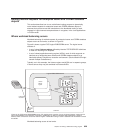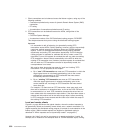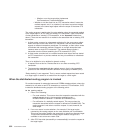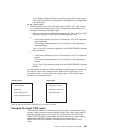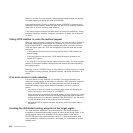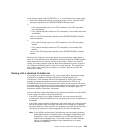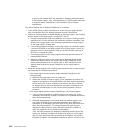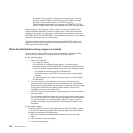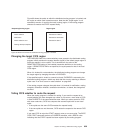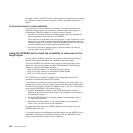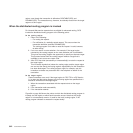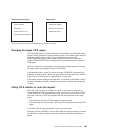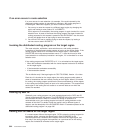
Performing a rolling upgrade of an EJB/CORBA server
The DYRLEVEL field of the communications area is a migration aid, intended to
help you perform a “rolling upgrade” of a multi-region logical server, whereby one
region at a time is upgraded from one release of CICS to the next, without bringing
down the server. Requests that require a specific level of CICS can be routed to an
appropriate AOR. For details, see DYRLEVEL.
Important
Note:
1. This mixed level of operation, in which different CICS regions in the
same logical server are at different levels of CICS, is intended to be used
only for rolling upgrades. It should not be used permanently, because it
increases the risk of failure in some interoperability scenarios. The
normal, recommended, mode of operation is that all the regions in a
logical sever should be at the same level of CICS and Java.
2. Do not attempt to use the DYRLEVEL field until you have read the
definitive information about upgrading CICS EJB/CORBA servers in
Migrating an EJB server to CICS Transaction Server for z/OS, Version 3
Release 2, in the Java Applications in CICS.
Routing non-terminal-related START requests
This section describes how to use a distributed routing program to dynamically
route non-terminal-related EXEC CICS START requests.
Which requests can be dynamically routed?
For a non-terminal-related START request to be eligible for dynamic routing, all of
the following conditions must be met:
v The request is eligible for enhanced routing. For general information about the
“enhanced” method of routing transactions invoked by EXEC CICS START
commands, and for specific information about which non-terminal-related START
requests are eligible for enhanced routing, see Routing transactions invoked by
START commands, in the CICS Intercommunication Guide.
v The transaction definition in the routing region specifies both ROUTABLE(YES)
and DYNAMIC(YES).
v The SYSID option of the START command does not specify the name of a
remote region. (That is, the remote region on which the transaction is to be
started must not be specified explicitly.)
If the request is fully eligible for dynamic routing, the distributed routing program is
invoked for routing. The START request is function-shipped to the target region
returned by the routing program.
Note:
1. If the request is ineligible for enhanced routing, the distributed routing
program is not invoked. Unless the SYSID option of the START
command specifies a remote region explicitly, the START request is
function-shipped to the target region named in the REMOTESYSTEM
option; if REMOTESYSTEM is not specified, the START executes locally.
2. If the request is eligible for enhanced routing but not for dynamic routing
(the transaction may, for example, be defined as DYNAMIC(NO)) the
Chapter 18. Writing a distributed routing program 637



